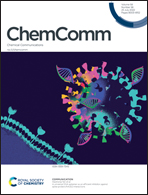Co-substitution in a Prussian blue analog with a hollow heterostructure for ultrahigh capacity and rate capability aqueous Zn2+ batteries†
Abstract
Nickel and manganese co-substitution into hollow Prussian blue nanocubes (H-PBMN) has been successfully carried out via utilizing a high-concentration polymer template to grow manganese-Prussian blue (PBM) and nickel-Prussian blue (PBN) through a slow nucleation process. Due to the hollow structure and double metal co-substitution, the properties of the electrode material have been optimized, and it presents an ultrahigh capacity of 138.4 mA h g−1 at 0.05 A g−1.



 Please wait while we load your content...
Please wait while we load your content...